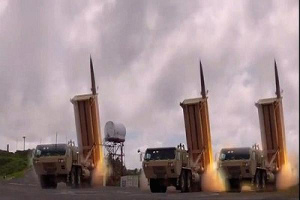Following the successful North Korean ICBM test earlier in the week, the US has announced its intention to carry out a new test of their THAAD missile defense system, an attempt to shoot down an IRBM simulating an attack around the THAADs in Alaska.
 The US is eager to make a show of being able to intercept North Korean missiles, but such tests are risky, as the missile defense systems are in practice pretty unreliable, and even in the optimum conditions provided by the tests, often fail, which would be a particularly public embarrassment.
The US is eager to make a show of being able to intercept North Korean missiles, but such tests are risky, as the missile defense systems are in practice pretty unreliable, and even in the optimum conditions provided by the tests, often fail, which would be a particularly public embarrassment.
The US has a number of THAADs deployed in Alaska, and two set up in South Korea. North Korea’s ICBM has a theoretical range to Alaska, based on estimates from the test. The Pentagon has repeatedly played up their ability to shoot down an attacking North Korean missile.
Yet in practice, the tests have shown very mixed results, with the most recent US missile defense test by the Navy failing to shoot down a missile launched by the same ship that had the interceptors on board. Even with perfect details and telemetry about the missile, high-speed interception is a tricky business, and most experts agree that in a real world situation the success rate would plummet.


